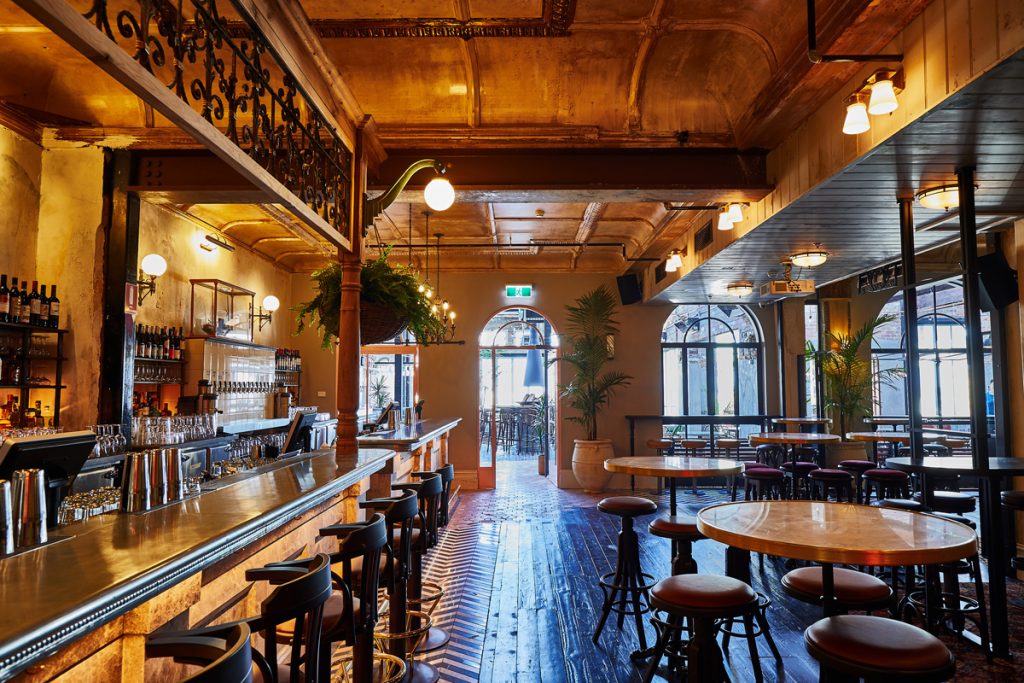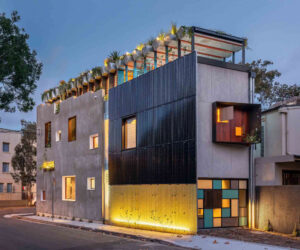The Espy redesign revealed
An ambitious design by Technē Architecture + Interior Design brings to light the history and story behind the St Kilda venue the Hotel Esplanade, known by all as The Espy.
Collaborating with owners Sand Hill Road throughout the design process, and continuing their 10-year partnership, The Espy represents Technē’s largest and most complex hospitality project to date.
“There is no other hotel or food and beverage project in the city that is as big and complex as The Espy,” Technē director Justin Northrop says.
While Garden State Hotel, which Technē worked on with Sand Hill Road, is clearly a significant venue, The Espy is 50 per cent bigger again.
Since it was built in 1878, The Espy has been a Victorian-era seaside resort and the hotel home to notable personalities such as entrepreneur, art collector and philanthropist Alfred Felton. It’s been a jazz-era ballroom and a rock and roll mainstay from the 1990s until 2015 when it closed for renovation.
The Technē design aligns with Sand Hill Road’s vision by highlighting the different eras across 12 bars, two restaurants and numerous discrete spaces. The reinvigorated venue has a total area of 3000-square-metres and can accommodate 1780 patrons.
“Working with a building with such an interesting history has extended our entire working process,” says Northrop.
“The design is unique because it focuses entirely on historical layering. Different eras and styles call to each other across the spaces – making for an eclectic customer exploration – and this is united throughout by exposing the good bones of the original building.”
Across the venue, the Technē design emphasises music and performance spaces, as loyal patrons of the old Espy would expect.
Three different spaces can accommodate performances that range in scale from intimate jazz or stand-up comedy to rock bands drawing big crowds in the hallowed Gershwin Room, a space where Technē has opted for minimal intervention.
“People have a real connection to the Gershwin Room. We’ve refreshed the bar but wanted to make sure the whole space still feels recognisable,” Technē director Nick Travers says.
Throughout the building, vintage rock posters drawn from thousands discovered in the venue’s archives further emphasise this part of the venue’s musical heritage.
“Our design concentrates on the building’s heritage and does not aim for a contemporary makeover,” Travers adds.
“We hope it will be hard to tell which sections are original details and which things have been recreated. This approach is new for us and also it’s also largely new in Melbourne; it’s more familiar in Europe where this architectural tradition is much older.”
The renovations expand the public offering from two levels to four, notably by opening the second level.
Other Technē interventions include creating an operable glass roof for the famous terrace entrance and highlighting the grand stairway that connects the building’s different levels.
“In a design sense, the glass roof allows the old building to be viewed as it was before the art deco bay window extension was added to it,” Northrop says.
“There’s that element of Victorian grandeur that is coming back into the ground level foyer and elsewhere.”
On the ground floor, the foyer’s arch windows offer views into the Main Bar and through to a cellar door-inspired dining area with wine barrels filling the walls, and kitchen beyond, while the former Espy kitchen becomes a public bar with traditional curved oak detailing.
The first floor is dedicated to a Cantonese restaurant Mya Tiger taking inspiration from the famous Raffles Hotel in Singapore. This space affords views of Port Phillip Bay as well as the buzz on the terrace below.
On the second floor, Felton’s spirit of art collecting (his bequest is a cornerstone of the National Gallery of Victoria’s collection) and as a host of salons for the creative community of his time informs the Technē design response.
“Alfred Felton’s ghost benevolently haunts the rooms on the second level. His story is more clearly explained than it has ever been and the renovation opens up spaces to the public that have not been seen since the early 20th century when they became boarding rooms,” Northrop says.
“We imagined this level as a Victorian parlour with small rooms, small bars filled with curios and little art works. There is a library and a salon – one of the spaces is called The Pharmacy because Alfred Felton made his money in part as a manufacturing chemist.”
Other areas include a small mezzanine-level function room and the 1950s-inspired Studio Bar on the ground floor, a space that patrons can book to record podcasts. This has what Northrop calls “a slightly more modern character” than some of the venue’s other restored spaces, with diner-style booths and 50s-style wood panelling.
Accentuating the design is a series of hand-painted, period-style murals by Perth artist Desmond Sweeney (8 Foot Walls), including one filling an eight metre wall in the the Green Room.
On the broad-ranging interior design and decor Technē worked closely with Sand Hill Road stylist Eleisha Gray to curate a selection of imported furniture and decorative objects that would further enrich the textural narrative.
Paying homage to The Espy’s earlier days, the timeless design revives the iconic building, now reborn for another 100 years of present and future patrons.
“There’s something about this hotel that captures the imagination like no other,” says Sand Hill Road director Matt Mullins.
“These are the things we determined to keep at the forefront of our minds as we conceived the look, feel and spaces of the new Espy – age, grandeur, history, arts – and respect for what it took to keep her alive all these years,” Mullins adds.












